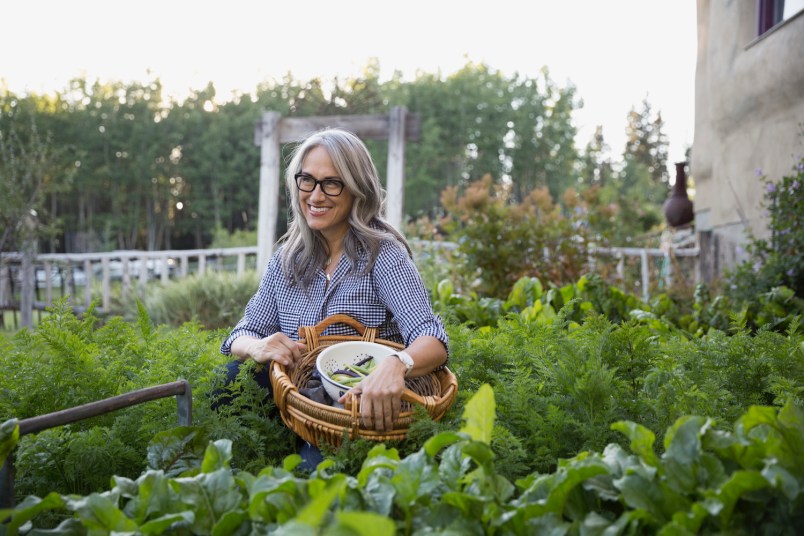4 Tips for Eating Healthy on a Budget

Switching to organic foods is an easy way to boost your health, but the high price can be a serious turnoff. Jeanine Donofrio, author of Love & Lemons Every Day Cookbook ($16.95, Amazon), weighs in on some surefire tactics to help you eat right without busting your budget.
Compare Prices
Do you find yourself skipping over the organics section because you assume the cost is prohibitive? Surprisingly, that’s not always the case. In fact, according to the US Department of Agriculture (USDA), some products — such as fall favorites, like Granny Smith apples and artichokes, as well as soy milk — are often the same price or cheaper. That’s because the growing popularity of organic foods is spurring more competition among vendors, who are consequently lowering their prices. To save even more, pick up a store’s private-label organic fare — research shows it can cost 18 percent less than name brands!
Buy Direct
Cut out the middleman and purchase anything from autumn-fresh carrots and pumpkins to eggs and milk from local farms and dairies through community supported agriculture (CSA) programs, where you can buy “shares” that entitle you to a weekly portion of a farmer’s latest crop. “My local CSA in Chicago is about 20 percent cheaper than even the farmers market,” says Donofrio. To find a CSA with organic produce near you, visit LocalHarvest.org/csa or visit EatWild.com, which lists nearby farms and dairies and indicates which are certified organic.
Save 50 Percent on Frozen Finds
You probably already know that seasonal organic fruit and vegetables will often be priced lower, simply because there’s more of it. When shopping for out-of-season items, opt for frozen versions, suggests Donofrio. While they may have a higher price tag than non-organic frozen produce, you’ll still save up to 50 percent versus buying them fresh, according to the latest figures from the USDA. Plus, research shows they’re just as nutritious, since they’re picked, then frozen in the peak of their ripeness.
Look for the USDA Label
Failing to read labels properly could see you purchasing pricey items you think are organic that really aren’t. That’s because some food manufacturers are trying to cash in on the growing popularity of organic foods by hiking up the price of certain products, then using organic-sounding labels, such as “all-natural” or “free range,” on their packaging to trick you into buying. “Terms like these are meaningless because they aren’t regulated; they don’t indicate how a food was produced or what it contains,” says Donofrio.
Fortunately, she says there’s an easy way to guarantee what you’re purchasing is genuine organic: Look for the official USDA label —a green and white circle that bears the words ‘USDA Organic’. “For a product to be certified-organic according to the official United States definition of the term, it must carry this label,” she explains.
This story originally appeared in our print magazine.
We write about products we think our readers will like. If you buy them, we get a small share of the revenue from the supplier.
More From Woman’s World
15 Easy Keto Food Substitutes You Can Buy Online
Reduce Belly Fat by Splashing This Common Ingredient on All Your Meals












